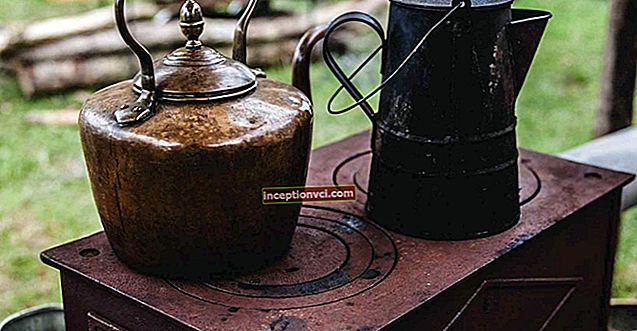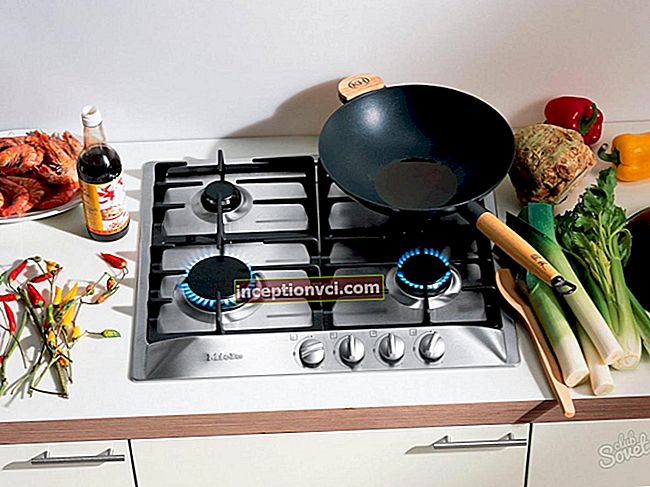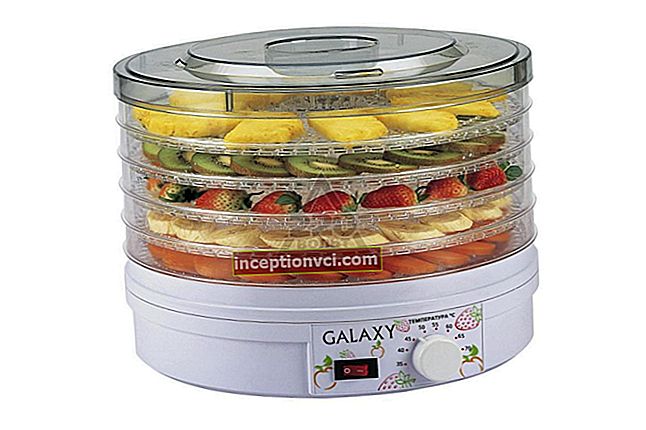The issue of storing food in the refrigerator boils down to three points: location, temperature and packaging. The right combination of these three factors will ensure that the products retain their properties. If you plan to store food in the freezer, then these three factors will be added to the correct preparation of the product for quick freezing.
Storing food in the refrigerator such as meat, fruits and vegetables, fish can be either short or long term:- short-term - from several days to two to three weeks - storage in normal (3-7 ° С) or "zero" refrigerator chambers. In such storage conditions, products, even perishable ones, do not lose their taste and are ready for use without special preparation;
- long-term storage - up to several months - usually involves special preparation of products and subsequent deep freezing in a freezer (-5-15 ° C). Of course, with deep freezing, products partially lose their properties, but if simple rules are followed, the negative impact is minimized.

Shelf life of food products in conventional or "zero" chambers:
- cooked food - up to 5 days;
- salads with meat or fish - no more than three days;
- greens are not washed. In order for the greens to be better stored, they are wrapped in paper (preferably wet) or put in a plastic bag. Shelf life - up to 4-5 days;
- mushrooms - up to 5 days;
- eggs are stored for no more than a week, but it is possible even longer - up to 3-4 weeks;
- cheeses: a lot depends on the variety, so look at the expiration date indicated on the package, most often it is 2-3 weeks. Hard cheeses are stored in plastic bags or wrapped in plastic. Gorgonzola or Roquefort - up to two weeks. Soft cheeses, such as brie or mozzarella, retain their properties for no more than two weeks, while they are tightly wrapped in paper;
- meat: stew no more than 1-2 days. Steaks, large pieces, tightly wrapped with cling film - up to 4 days;
- fish and seafood: no more than 2-3 days.
- poultry: 6-9 months;
- fish: up to 3 months;
- fish dishes: up to 4 months;
- seafood: up to 3 months;
- mushrooms: it is recommended to freeze immediately after collection, shelf life up to 6 months;
- fruits and vegetables: up to a year.
Storing food in the refrigerator
The rules for storing food in the refrigerator are as follows:- correct placement of products. Depending on the design of the refrigerator, the temperature regime of its chambers is different. This must be taken into account when placing products:
- it is better to store dairy products on the upper shelves;
- fish and meat products are kept on the lowest shelves, the coldest;
- special boxes are provided for vegetables and fruits.
- consider the compatibility of different products. There are some tips on what not to store next to what:
- fruits, vegetables and smoked meats are not stored next to cheeses and sausages;
- root vegetables (beets, cabbage, potatoes) - along with fruits;
- bananas are not placed next to oranges and other citrus fruits;
- fish does not go well with baked goods and fruits.
- packaging of products. Products emit odors, and in the confined space of the refrigerator, these odors are mixed. The problem is solved by packaging the products. For this, paper bags, containers and sealed containers are used, including containers with special lids that require vacuum storage. The following is recommended:
- meat products: keep in a package for no more than a month;
- fish: in a bag, shelf life no more than 2 weeks;
- It is better to keep ready-made dishes in an enamel dish with a lid or in special containers for food (bowls). If there is no lid, then the plate with food is wrapped in a special film or foil;
- baked goods are left on a dish, covered with a napkin;
- groceries - butter, sausage, cheese - retain their qualities better in parchment paper or foil;
- dairy products, for example, cottage cheese, are kept in glass or enamel containers;
- the refrigerator is cleaned at least once every two months. To do this, take out all the products, and the walls of the chambers and shelves are washed with soap and wiped dry. For cameras with vegetables, a special antibacterial mat will not be superfluous.

Some foods are kept out of the refrigerator, especially in spring or autumn when the air temperature is optimal. For example, apples, pears, bananas. Potatoes can be kept on the balcony, however, always in a paper bag impervious to sunlight, otherwise it will turn green, and it is very harmful to use such potatoes. Make sure the potatoes are dry. If not, dry it before filling it into the bag.
You should not fill the refrigerator with cans with preservation. Canned food is airtight and unpretentious to temperature. In addition, heavy cans take up a lot of space and create a load on the blower system, which interferes with normal air circulation. Storing mineral water in the refrigerator negatively affects its healing properties.
For better preservation of fresh vegetables, herbs, fruits, minced meat and other products, some refrigerators have a special chamber. It maintains a zero temperature, as well as a constant level of humidity. In the "zero" chamber, the products retain their taste better. The function of switching the universal chamber to normal mode for storing chilled or frozen food is provided. There are two types of such cameras:
- the zone of "wet freshness" is a temperature zone in the range from 0 ° С to + 1 ° С, humidity - 95%. It is ideal for storing vegetables, fruits and herbs. Some types of fruits and vegetables can be stored here for up to several months;
- the zone of "dry freshness" is a temperature range from -1 ° C to 0 ° C, with a humidity not exceeding 50%. These conditions prevent the crystallization of moisture in the food and, as a result, the destruction of the cellular structure. The surface of the product may even be covered with a thin crust of ice, but the inside will remain fresh. Fresh fish and fresh meat, seafood and poultry, cheeses and sausages should all be stored under these conditions. During the week, the conditions of "dry freshness" are able to keep fresh meat or fresh fish, without losing the initial taste and nutritional qualities of the product.

Freezing food
Foods, especially vegetables and fruits, are frozen, most often for the winter. They are properly prepared before being placed in the cell. Remember that in freezers, freezing is shock and fast, at low temperatures. Before we get into details, here are some general guidelines:
- vegetables and fruits are cooked immediately after defrosting, so they are washed before being placed in the chamber;
- some vegetables are blanched before freezing (boiled in a small amount of water with a low boil);
- the meat is frozen without washing, after cutting off the fat. Depending on what you do with it, it can be cut into pieces or frozen in one piece. When laying small pieces, it is advisable to pack so that they do not freeze with each other;
- poultry: the carcass is gutted, the insides are packed separately. Carcasses are not stuffed before freezing;
- the freezing speed depends not only on the set temperature, but also on the size of the food. Products are frozen in small portions, with the expectation that they will then be cooked immediately. At the same time, the smaller the portion to be frozen, the faster the products will freeze in depth. For example, meat is chopped into small pieces if you plan to cook broths from it later;
- products should be packed in cellophane bags, special food bags or containers. Zip bags are convenient for freezing.Leaky container lids are sealed with a special tape that freezes to the package;
- remove excess air from the bag before placing it in the freezer.
Freezing vegetables, fruits, herbs, mushrooms at home in the freezer:
- greens (green onions, dill, basil, parsley):
- rinse the herbs in running water and dry;
- finely cut and pack into bags in small portions;
- squeeze air out of the bags.
- cauliflower:
- remove the top leaves;
- divide the head of cabbage into inflorescences;
- blanch the cabbage in a weak citric acid solution for ~ 3 minutes;
- drain the water, cool the inflorescences and dry;
- put in bags and place in the freezer.
- corn and green peas:
- husk peas or corn;
- boil in boiling water for 3-5 minutes;
- throw in a colander, rinse with running water;
- dry and put in bags;
- place in the freezer.
- sorrel:
- rinse and cut the leaves;
- dip in boiling water for a minute;
- put in a colander and cool after the water drains;
- put in bags and freeze.
- broccoli:
- divide into inflorescences;
- rinse, dry;
- decompose into packages.
- tomatoes. There are two ways to freeze tomatoes. The first is to twist the tomatoes in a meat grinder, pass the mass through a sieve, separate the seeds and then pour into containers. The second way is below:
- rinse and dry;
- cut into slices;
- put in bags, remove air and tie a hole;
- small tomatoes do not need to be chopped, but it is advisable to pierce them in several places so that they do not crack during freezing.
- lettuce pepper. Depending on what you are going to do with the pepper, the cooking methods will differ:
- if you need pepper for stuffing, then remove the stem and all the seeds. Rinse, dry, put in a bag and freeze;
- immediately stuff the pepper with boiled rice and carrots and place in the freezer in this form;
- the easiest way: cut into small pieces and thus freeze.
- cucumbers: wash, cut into cubes (or strips).
- zucchini and zucchini:
- remove seeds, cut into cubes and boil;
- throw in a colander, let the water drain to cool;
- put in bags and remove the air.
- berries. Everything is simple here - rinse, discard in a colander, dry, pack. Raspberries, blackberries, and strawberries are best stored in containers. You can pre-grind the berries with sugar and pour into cups or containers;
- mushrooms. Some types of mushrooms are frozen raw, such as honey mushrooms, milk mushrooms and champignons. For other species, the following procedure is recommended:
- peel, rinse, large mushrooms - cut into pieces;
- fry in vegetable oil for twenty minutes so that excess moisture evaporates;
- cool, pack and place in the freezer;
- alternative: fry in the oven. To do this, put the mushrooms in a deep baking sheet and simmer in the oven, stirring until all the liquid has evaporated.

It is advisable to mark the packaging of products. With a long shelf life of large quantities of food, it is important to label the packaging to prevent spoilage of the product due to expiration. Special cards are attached to special cards, on which the contents and date of freezing are indicated. These cards can be made from paper or cardboard. The inscriptions are made using a conventional felt-tip pen or marker. In order to quickly recognize the product, it is necessary to use multi-colored cards.
How to defrost food
How to defrost meat, poultry, chicken or minced meat properly? There are three main ways to defrost food:
- thawing in the refrigerator. The products are left on the bottom shelf of the refrigerator (temperature 4-6 ° C). The defrosting time depends on the weight of the food. For example, a large chicken or turkey carcass can be thawed within 24 hours;
- thawing in cold water. The product is placed in cold water, where it is kept for several hours;
- quickly defrost fish, meat or minced meat in the microwave: each stove has a special mode that will defrost the product in a few minutes.
Other methods are not recommended to use, as they lead to a significant loss of the taste of the product.
Let's take a closer look at how to defrost food:
- meat: large pieces are thawed in the refrigerator compartment on the lower shelf. Defrosting time depends on the size of the piece of meat. Defrost small portions in water. If your refrigerator has a "zero" chamber, then put the meat there and keep it for 24 hours. It is advisable to bring to room temperature in warm water for 10-15 minutes. Small portions for cooking, for example, broth, are immediately put into cold water and then boiled. Meat is not thawed in hot or boiling water;
- defrost poultry in the same way as meat;
- fish: it is advisable to defrost naturally, in the air, but in a package so that the moisture does not evaporate. Other options are an option: in cold water with added salt (2 liters of water and a tablespoon of salt) or under cold running water a few hours before cooking. Do not defrost in warm or hot water;
- semi-finished products and ready-made meals: they are heated on an electric stove and in an oven, at a temperature of at least 200 ° С;
- berries and fruits are defrosted in the refrigerator, but it takes a long time - up to 12-14 hours. In the microwave, they defrost in five minutes. Small berries - cranberries, currants, blueberries - are poured with water for 10 minutes. The fruit is thawed as well;
- Pour seafood into a bowl and cover with warm water. Hold in warm water for a few minutes, because the water is drained and a new one is poured - after five minutes the seafood is completely thawed.
See a few life hacks on how to keep food in the refrigerator practical.









